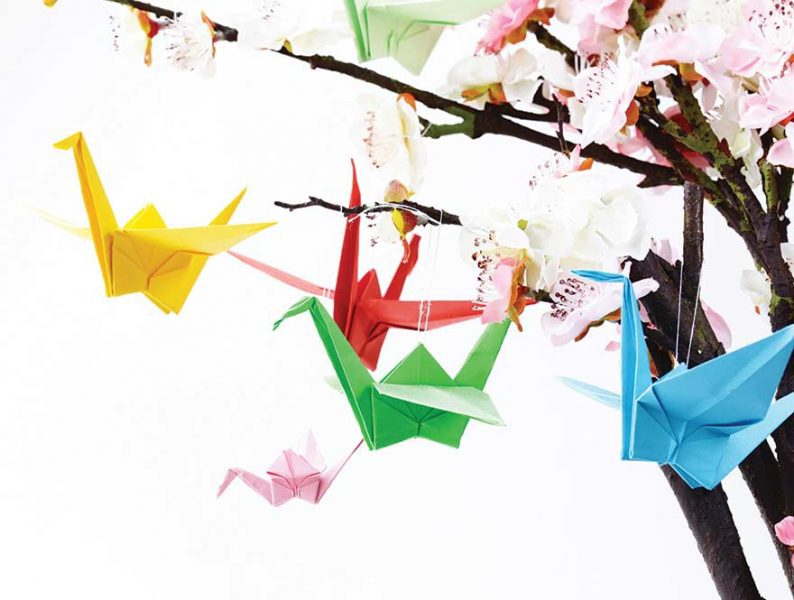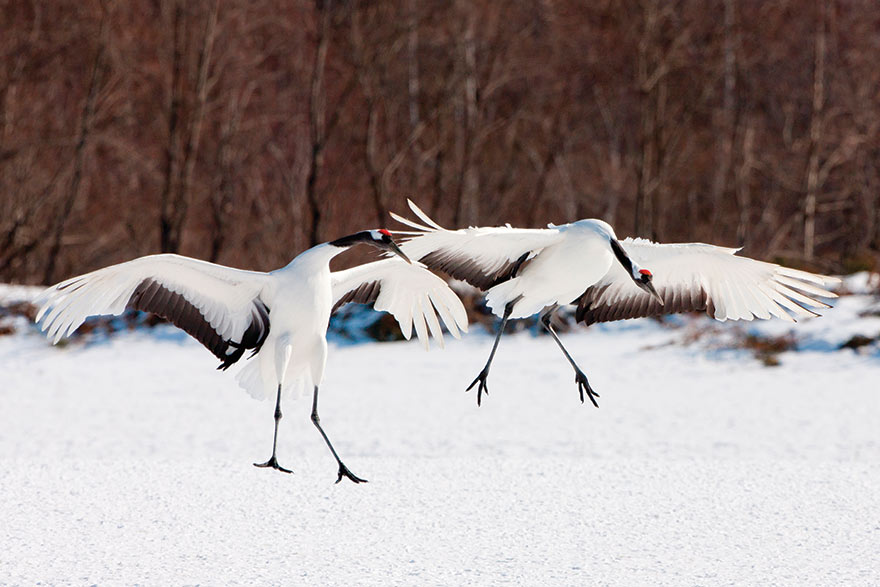Graceful, long-legged cranes are said, according to myth, to live for a thousand years, which is why they are a magical sign of longevity in Japan. This elegant bird can be seen everywhere, from decorations on bridal kimonos and sake bottles to airline logos and, of course, in the form of the classic origami crane
Cranes, which belong to the Gruidae family, are the largest of all flying birds. And they’ve long symbolised good fortune, fidelity, grace, longevity and immortality. Throughout history and in most cultures, mythological tales exist about cranes, which are depicted as majestic birds with charisma that are known for their spectacular courtship rituals. In Christian stories and art, cranes are considered vigilant, symbols of foresight and a natural enemy of the Devil. In Hindu mythology, the crane represents the Goddess of deceit, while folklore tales abound about the saras bird (Indian crane) being the ultimate symbol of deception.
The crane has always been a strong symbol of success and good fortune in Japanese culture, and when folded in origami it is believed that your heart’s desire will come true. One young girl’s story provided new depth to this idea.
The crane has always been a strong symbol of success and good fortune in Japanese culture, and when folded in origami it is believed that your heart’s desire will come true
Her name was Sadako Sasaki. As an infant, she was exposed to radiation after the bombing of Hiroshima, which had developed into leukaemia by the time she was twelve years old. With the goal of making 1,000 origami cranes, she began folding paper to form this majestic bird, in the hope that they would heal her. Her heart’s desire changed midway through, however, and her wish became to heal the world instead of herself. She continued folding the cranes for world peace and healing until she passed away. She was buried with a wreath of 1,000 paper cranes that her classmates helped her finish. She is forever memorialised at the Hiroshima Peace Park, where a statue of her stands always draped with 1,000 paper cranes to make sure her message of world peace will never be forgotten.

Classed as an endangered species, there only an estimated 2,750 cranes left in the wild, with around 100 of these calling Japan home. The Japanese crane inhabits the eastern regions of the northern island of Hokkaido. Due to humans destroying large swathes of their natural habitat in wetland areas that these beautiful birds need for their breeding and living, low rainfall and new dam construction is also causing the wetlands to dry out.
Sadako Sasaki heart’s desire became to heal the world instead of herself. She continued folding the cranes for world peace and healing until she passed away
These birds were thought to be on the brink of extinction until a small group of local farmers took it upon themselves to feed the birds regularly, in order to help them through the winter months when food is scarce. The farmers treated the birds as guests, seeing the birds’ visits to their farmlands as a great honour.
This has helped to bring them back from the brink, and these birds are now believed to be beginning to gain the upper hand yet again, with numbers starting to slowly stabilise and the help of local and worldwide organisations ensuring that this amazing bird will eventually be saved.
